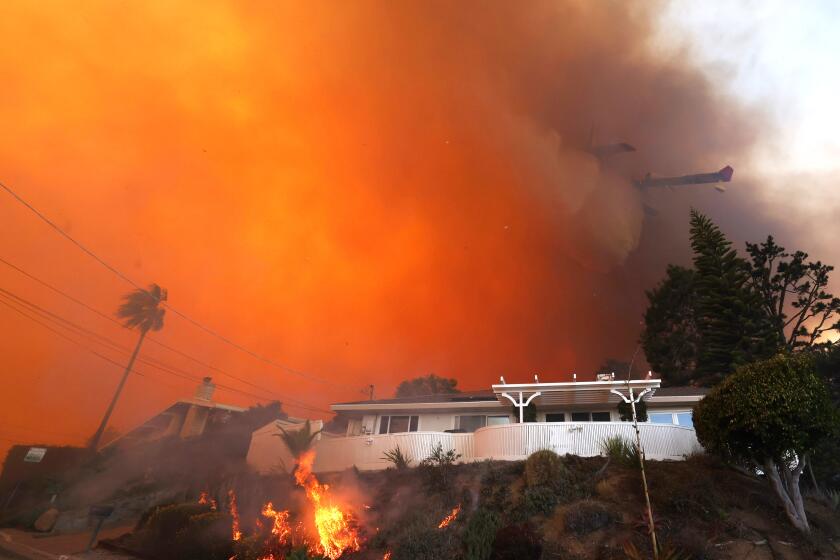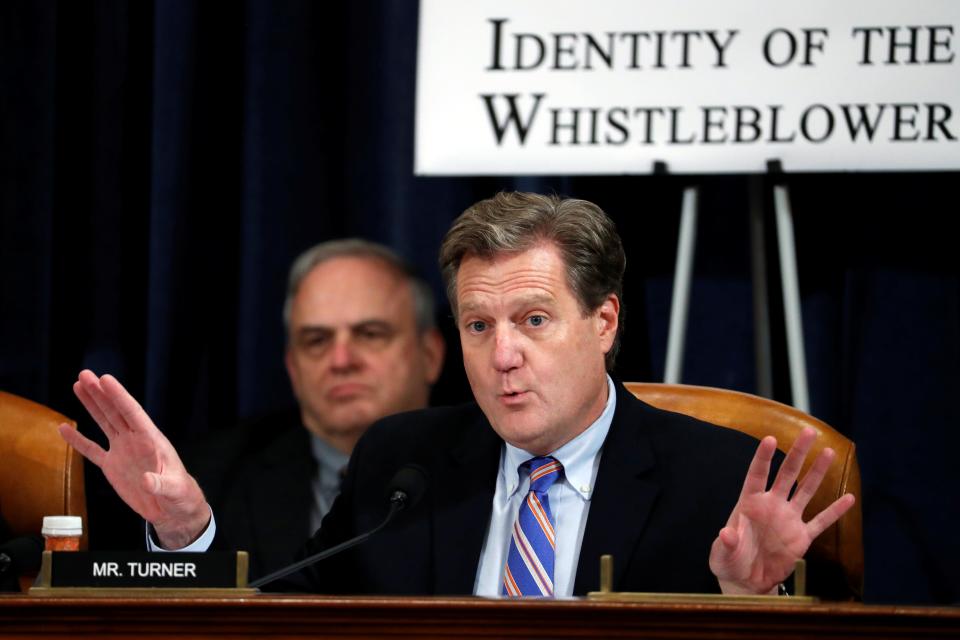
The California FAIR Plan Assn., the state’s property insurer of last resort, was born of smoldering ashes — not of a wildfire, but of one of the worst urban disturbances in U.S. history.
The Watts riots in 1965 damaged or destroyed more than 600 buildings, causing insurers to flee and highlighting the need for a new type of carrier to step in.
Established by the Legislature to also cover communities at risk for wildfires, the plan has proved resilient, paying out billions of dollars over the decades, including after the 2018 Camp fire that destroyed the town of Paradise and cost insurers $12.5 billion.
Advertisement
Advertisement
Now, however, the FAIR Plan is facing its biggest crisis since the 1994 Northridge earthquake, when it was bailed out by the state’s licensed property insurance companies, which operate the plan and provide it with a financial backstop.
Read more: First, they lost their home insurance. Then, L.A. fires consumed their homes
The 2004 temblor caused some $15.3 billion in insured losses for the industry, but even after inflation, the Palisades and San Gabriel Valley’s Eaton fires alone are expected to be costlier.
CoreLogic, a leading analytics and data firm, estimates the losses of those fires at $35 billion to $45 billion, not including the other smaller blazes that broke out. The fires have damaged or destroyed more than 12,000 structures and killed at least 27 people. Many homeowners in the fire zones were on the FAIR Plan after insurers pulled back from California’s troubled insurance market.
Advertisement
Advertisement
Forking over billions of dollars could wipe out the plan’s $377 million in reserves, as well as $5.78 billion worth of reinsurance the FAIR Plan announced Friday it had. The reinsurance requires the plan to pay the first $900 million in claims and has other limitations.
To avoid insolvency, the plan could be forced to lean on its member carriers. And they, in turn, might levy surcharges on their own policyholders to pay for any assessments.
“The L.A. wildfires are on track to be the costliest natural disaster in California in modern times,” said former state Insurance Commissioner Dave Jones. “And as the climate crisis worsens, the FAIR Plan faces extraordinary financial challenges with covering the risks private insurers are declining to cover because of climate change.”
The insurer offers basic insurance to rebuild after a fire, as well as coverage for personal property and expenses incurred while a home is rebuilt, and some optional protections. However, it can be costly and dwelling coverage is capped at $3 million. Further, the plan recommends policyholders consider buying additional private insurance for floods, earthquakes and other uncovered losses, including theft and liability.
Advertisement
Advertisement
More in Business
It’s unclear what the FAIR Plan’s final bill will total, but its statewide exposure to financial losses has tripled to $458 billion over the last several years, according to the plan’s website. During that time, hundreds of thousands of homeowners, especially in foothills and other neighborhoods at high risk for fires, have piled into the plan as insurers have pulled back from the market over growing wildfire losses.
Based on preliminary estimates released Friday, the plan said that it has insured 22% of the structures within the Palisades fire zone as defined by Cal Fire, giving it a potential loss exposure of more than $4 billion. And it has insured 12% of the structures in the Eaton fire zone, giving it a potential exposure there of more than $775 million.
So far, the plan said it has received 3,600 claims but expects that number to grow and has boosted staff to handle the volume. It said it typically receives claims representing 31% of its total exposure, but its actual losses can be different.
“Our No. 1 focus remains on serving our customers and ensuring all covered claims are paid. The Southern California wildfires have been devastating for families and communities, far beyond the loss of property,” it said.
Advertisement
Advertisement
Read more: How the devastating Los Angeles fires could deepen California’s home insurance crisis
Jewlz Fahn and her husband, Terry, signed up for the FAIR Plan last year after State Farm, which had insured them for more than a decade, did not renew the fire, personal property and loss-of-use coverage they had for their home on Fiske Street, which burned down near the heart of Pacific Palisades.
They were able to get similar coverage for their dwelling — a little under $2 million — but their personal property coverage was slashed from $1.55 million to $153,000 and their loss-of-use insurance, which will covers their living expenses while their home is rebuilt, also dropped sharply from $620,160 to $153,000. More frustrating, Fahn said, has been the inability to get a timely payment for living expenses.
“I just finally got a phone call Wednesday from my claims manager — eight days after the fire started. They are very overwhelmed. I was trying to keep my cool, and I was told that they are trying to give an advance of a six-month payment, which for us would be a total of $52,038,” said Fahn, 52, who has been living in a Century City hotel with her husband.
Advertisement
Advertisement
In contrast, she said, a friend received a $75,000 payment within days of the fire from her commercial carrier.
The last time the plan faced such a financial catastrophe was after the 1994 Northridge earthquake, which caused $24 billion in insured damages for the industry in 2013 dollars, according to the Insurance Information Institute.
The plan assessed its members $260 million for wildfire and earthquake costs, according to the state Department of Insurance, leading to the establishment in 1996 of the California Earthquake Authority, a not-for-profit that now provides about two thirds of the state’s earthquake coverage.
As the FAIR Plan’s liabilities have soared, California Insurance Commissioner Ricardo Lara pushed through a series of reforms last year that seek to encourage private insurers to write more policies in communities at risk for wildfires by giving them concessions, including the right to charge their California customers for the cost of reinsurance they buy attributable to state risks.
Advertisement
Advertisement
Those reforms are just getting underway but one controversial provision intended to bolster the FAIR Plan’s finances in the event of a catastrophe could burden homeowners statewide with the cost of any bailout.
The measure allows the plan to assess its member carriers — once it runs through its reserves, reinsurance and catastrophe bonds — up to $1 billion to pay residential claims and $1 billion to pay commercial claims. The carriers could then surcharge their residential and commercial customers for half of what they are assessed. (Homeowners could not be surcharged for commercial losses.)
Insurers also can surcharge policyholders for 100% of assessments in excess of those amounts. Any surcharges would require the approval of the insurance commissioner.
Consumer Watchdog — which wrote the 1988 ballot measure that provided for an elected insurance commissioner with the authority to review and turn down insurer rate requests — called the provision an industry bailout last year. The group said existing law did not allow for the surcharges. Lara maintained it did and said he was offering consumers some protection.
Advertisement
Advertisement
“For us, it’s pretty simple. Homeowners across the state should not be on the hook for the L.A. fires because insurance companies abandoned those neighborhoods and dumped homeowners on the FAIR Plan,” said Carmen Balber, executive director of the Los Angeles consumer group.
Lara’s spokesperson, Michael Soller, said he could not comment on whether the commissioner would approve any surcharges but noted the provision calls for the FAIR Plan to run through all its financial resources before any assessment can even be considered.
“That adds another layer to prevent us from ever getting to a place where they have to pass costs along,” he said.
There were no homeowner surcharges after the Northridge earthquake.
Advertisement
Advertisement
Read more: Crews improve containment on Palisades, Eaton fires; some residents allowed to return
The FAIR Plan in its update said that if it needs to assess its member carriers it would be based on their market share in 2023, but it has not yet reached that determination.
State Farm General, the state’s biggest home insurer, has become a punching bag after the fires due to its announcement last year that it would not renew some 72,000 residential and commmercial policies statewide. Last week, it rescinded that decision for all L.A. County residential customers whose policies had not yet lapsed.
Read more: State Farm expands renewal offers to all L.A. County policyholders slated to have been dropped
Advertisement
Advertisement
Jon Farney, chief executive of State Farm, told the Times last week that the Bloomington, Ill., insurer would recoup what charges it could from its own policyholders as allowed under state law.
“If there was a FAIR Plan assessment and the ability to pass that surcharge on, yeah, that’s what we would do,” he said.
Mercury Insurance, one of the state’s largest home insurers, announced a week after the fires started that its initial analysis showed its losses would probably exceed the $150 million it must pay before its reinsurance kicks in and covers higher losses. It also said its reinsurance would cover any FAIR Plan assessment.
The company declined to say whether it would surcharge its customers, deferring any comment to Lara, who a company spokesperson said “will set out guidelines.”
The idea that millions of Californians who live nowhere near the Los Angeles County fires could face surcharges on homeowner policies — that in some instances already have risen by hundreds or thousands of dollars over the last several years — has sent lawmakers in Sacramento scrambling for an alternative.
Just two days after the Palisades fire began, legislators introduced a bill that would allow the FAIR Plan to float bonds if the insurer faces “liquidity challenges.” The FAIR Plan said it supports the bill.
“The most important question for us right now is: ‘How can we help?’” Assembly Speaker Robert Rivas said in unveiling the legislation sponsored by two Southern California lawmakers.
A spokesperson for Gov. Gavin Newsom said, “The climate crisis has changed everything” and that the governor and insurance commissioner were still trying to assess the effects of the fires on the plan but would be “vigilant as the FAIR Plan explores the options they have to make sure impacted Californians have their claims paid.”
Jones, the former insurance commissioner, is dubious that floating potentially billions of dollars of tax-free bonds to pay claims will solve the crisis, although they would be very helpful in making sure there is money available to pay FAIR Plan claims.
“Bonds will help them pay off the claims as they come in, but they have got to be able to pay off the bonds. And the only way they’re going to be able to pay off the bonds is with an assessment if they run out of money,” he said. “Bonds are not a magic wand.”
Times staff writer Ben Poston contributed to this report.
This story originally appeared in Los Angeles Times.
EMEA Tribune is not involved in this news article, it is taken from our partners and or from the News Agencies. Copyright and Credit go to the News Agencies, email news@emeatribune.com Follow our WhatsApp verified Channel




